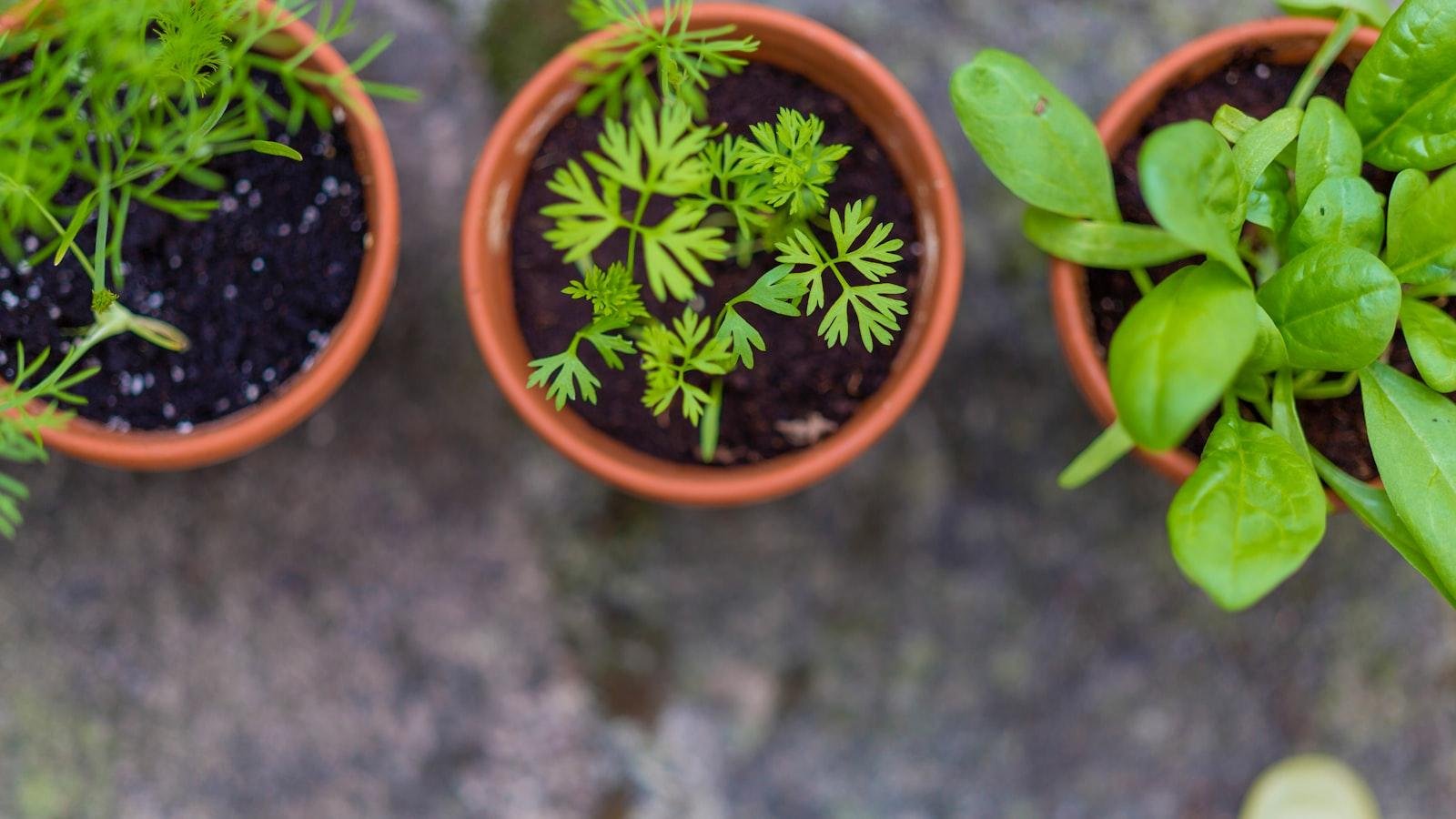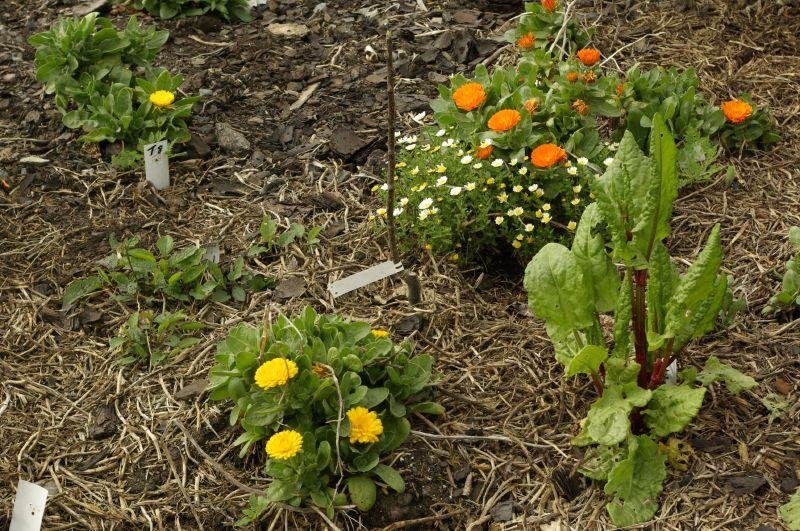Welcome to our tranquil corner of the internet, where the beauty of nature and the art of gardening intertwine. Today, we have a special treat for all nurturing enthusiasts out there – a captivating YouTube video exploring the precious gems of gardening. Titled “Gardening Gems: Nurturing Nature’s Bounty with Expert Tips!”, this enchanting visual journey will unveil the secrets of cultivating flourishing gardens, guided by the wisdom of experienced horticulturists. So grab a cup of tea, settle into your favorite reading spot, and let’s embark on an immersive exploration of nature’s incredible bounty, with tips and tricks from the experts themselves!
Table of Contents
- Heading 1: Unleashing the Magic of Organic Fertilizers: Enhancing Soil Health and Nutrients!
- Heading 2: Perfecting Plant Pruning: Mastering the Art of Shaping and Stimulating Growth.
- Heading 3: The Art of Companion Planting: Maximizing Plant Health and Yield Through Smart Pairings.
- Heading 4: Inviting Beneficial Insects: Creating a Harmonious Garden Ecosystem for Natural Pest Control.
- Wrapping Up
Heading 1: Unleashing the Magic of Organic Fertilizers: Enhancing Soil Health and Nutrients!

Gardening Gems: Nurturing Nature’s Bounty with Expert Tips!
In this post, we delve into the enchanting world of organic fertilizers, exploring how they can magically enhance the health and nutrients of your soil. Organic fertilizers, derived from natural sources such as plants, animals, and minerals, are a vital tool in the hands of every gardener who wishes to nurture their plants the natural way. By utilizing these gardening gems, you can unleash the power of nature to create a flourishing oasis in your very own backyard!
One of the primary benefits of organic fertilizers is their ability to improve soil health. Unlike synthetic fertilizers, which can strip the soil of its natural nutrients over time, organic fertilizers work hand-in-hand with Mother Nature to replenish and fortify the soil. They provide essential minerals and trace elements that are necessary for robust plant growth and disease resistance.
Additionally, organic fertilizers enrich the soil with organic matter, enhancing its structure and water-holding capacity. This allows for better drainage and aeration, creating an ideal environment for beneficial microorganisms to thrive. These microorganisms, such as bacteria and fungi, play a vital role in breaking down organic matter and converting it into nutrients that plants can readily absorb. By using organic fertilizers, you are not only feeding your plants but also nurturing the intricate ecosystem beneath the surface.
To fully unlock the magic of organic fertilizers, it is important to understand and utilize the various types available. From compost and manure to bone meal and seaweed extracts, each type has its own unique benefits and applications. Combining different organic fertilizers can create a synergistic effect, providing a well-rounded nutrient profile for your plants.
Remember, gardening is a continuous learning experience, and experimentation is key. Take a cue from nature itself, embrace diversity, and have fun exploring the wonders of organic fertilizers. With a little bit of patience and a touch of green thumb, you can transform your garden into a thriving haven that showcases the beauty and abundance of nature!
Heading 2: Perfecting Plant Pruning: Mastering the Art of Shaping and Stimulating Growth

In this post, we dive into the captivating world of plant pruning, uncovering the secrets to perfecting this age-old gardening art. Whether you’re a novice or an experienced green thumb, shaping and stimulating growth through strategic pruning techniques can truly take your gardening skills to the next level.
To begin, let’s explore the importance of shaping your plants. Pruning not only enhances the aesthetic appeal of your garden, but it also encourages healthy growth. By removing dead or diseased branches, you allow for better air circulation and light penetration, promoting robust and vibrant foliage. It’s like giving your plants a much-needed spa day!
When it comes to pruning, timing is everything. Different plants have different growth cycles, and understanding these cycles is crucial for successful pruning. For example, flowering shrubs are often pruned in late winter or early spring, before new growth begins. On the other hand, summer-blooming plants should be pruned in late winter or early spring, just as new growth is starting to emerge. By following these seasonal cues, you can ensure that your plants thrive and bloom beautifully.
Now, let’s dive into some expert tips for mastering the art of pruning. Remember, the golden rule is to always use clean cutting tools, as dull or dirty blades can damage the plants. So, grab your trusty pair of bypass pruners and let’s get started!
-
Start with a plan: Before you make a single cut, take a step back and visualize the desired shape of your plant. Identify any branches that are crossing or rubbing against each other and remove them first.
-
Make precise cuts: When pruning, it’s important to make clean and precise cuts just above a node or bud. Angle the cut away from the bud to encourage outward growth.
-
Don’t get carried away: While pruning can be tempting, remember that less is often more. Avoid excessive pruning, as it can weaken the plant and inhibit its ability to produce flowers or fruit.
-
Provide support: After pruning, consider providing support for your plants, such as stakes or trellises. This will help them maintain their desired shape and prevent branches from breaking under the weight of foliage or fruit.
Remember, pruning is both an art and a science. With practice and a keen eye, you’ll master the delicate balance between shaping and stimulating growth, ultimately nurturing nature’s bounty in your own garden. Happy pruning!
Heading 3: The Art of Companion Planting: Maximizing Plant Health and Yield Through Smart Pairings

The Art of Companion Planting is a gardening technique that has been passed down through generations. It involves strategically planting different types of plants together, creating a symbiotic relationship that benefits both plants. By cleverly pairing compatible plants, you can maximize plant health and yield, while reducing the need for pesticides and fertilizers.
One popular example of companion planting is the classic combination of tomatoes and basil. These two plants not only complement each other in the kitchen, but also in the garden. Basil repels harmful pests that can damage tomato plants, while tomatoes provide shade and support for the basil. It’s a beautiful partnership that not only creates a visually stunning garden, but also improves the overall health and productivity of both plants.
Another great companion planting example is pairing carrots with onions. Carrots are susceptible to carrot fly, a common pest that can devastate a carrot crop. However, by planting onions alongside carrots, the strong scent of the onions repels the carrot flies and keeps them away. This simple, yet effective technique helps to protect your carrots and ensures a bountiful harvest.
Remember, when it comes to companion planting, there are countless possibilities. From flowers that attract pollinators to herbs that repel pests, the key is to experiment and find pairings that work best for your garden. So why not give it a try and let nature do its magic in your garden? With careful planning and smart pairings, you’ll be amazed at the incredible results you can achieve!
Heading 4: Inviting Beneficial Insects: Creating a Harmonious Garden Ecosystem for Natural Pest Control
In today’s post, we dive into the enchanting world of gardening gems and explore how you can create a harmonious garden ecosystem that invites beneficial insects for natural pest control. Nature has its own bounty of helpers, and by nurturing these tiny creatures, you can enjoy a flourishing garden while minimizing the need for harmful pesticides.
One of the first steps in inviting beneficial insects to your garden is to provide them with a diverse range of native plants. These plants act as magnets, attracting different types of insects and creating a rich tapestry of biodiversity. Choose plants that flower at different times throughout the year to ensure a continuous food source for your insect allies.
To further entice beneficial insects, consider creating inviting environments in your garden. Provide shelter by incorporating features such as rock piles, mulch, or even insect hotels. These hiding spots and cozy nooks not only offer protection but also serve as breeding grounds for these helpful creatures. Additionally, a water source like a birdbath or small pond can make your garden even more appealing to insects and other wildlife.
In your quest for a garden ecosystem that balances itself naturally, it’s important to familiarize yourself with the specific beneficial insects in your region. Ladybugs, lacewings, and hoverflies are just a few of the many allies that can aid in controlling pests like aphids, mites, and caterpillars. By learning about their habits and preferences, you can tailor your garden to suit their needs and maximize their impact on pest control.
Creating a harmonious garden ecosystem is an ongoing process that requires patience and observation. It may take time for beneficial insects to establish a presence in your garden, but rest assured that by providing them with a welcoming habitat and sustainable practices, you are nurturing a cooperative relationship with nature. Let us embrace the beauty of these gardening gems and revel in the magic they bring to our gardens!
Wrapping Up
And there you have it, folks! We hope you’ve enjoyed this delightful journey through the world of gardening gems. With expert tips and a touch of magic, we’ve explored the art of nurturing nature’s bounty.
As we’ve seen in this video, gardening is more than just planting seeds and watching them grow. It’s about forming a deep connection with the earth, understanding the needs of each plant, and working together to create a harmonious ecosystem.
We’ve learned from the experts how to prepare the soil, choose the perfect plants for our garden, and provide them with the care and attention they deserve. Their knowledge and passion for gardening have truly opened our eyes to the wonders of nature and how we can play a part in its beauty.
Whether you have a sprawling backyard or a small balcony, there’s always a space to create your own little garden sanctuary. From blooming flowers to luscious vegetables, the possibilities are endless. With a little patience, a lot of love, and the right tools, you too can nurture nature’s bounty.
So, get out there, dig your hands into the soil, and let nature guide you. Feel the sun on your face, the gentle breeze in your hair, and the joy that comes from watching your garden flourish. As you nurture your plants, they will, in turn, nurture your soul.
Thank you for joining us on this journey through the beauty of gardening. We hope you’ve gained some valuable insights and inspiration to create your own garden oasis. Remember, gardening is not just a hobby, it’s a way of life, a celebration of nature’s gifts.
So, until we meet again, keep gardening, keep nurturing, and keep embracing the wonders that nature has to offer. Happy gardening, everyone!
Discover more from CaveNews Times
Subscribe to get the latest posts sent to your email.









![[Highlight] Steph Curry hits the step back three and tells the Mavs it’s time to go Night Night!](https://cavemangardens.art/storage/2024/11/174867-highlight-steph-curry-hits-the-step-back-three-and-tells-the-mavs-its-time-to-go-night-night-360x180.jpg)















![Exploring the Serene Beauty of Nature: A Reflection on [YouTube video title]](https://cavemangardens.art/storage/2024/04/114803-exploring-the-serene-beauty-of-nature-a-reflection-on-youtube-video-title-360x180.jpg)


























